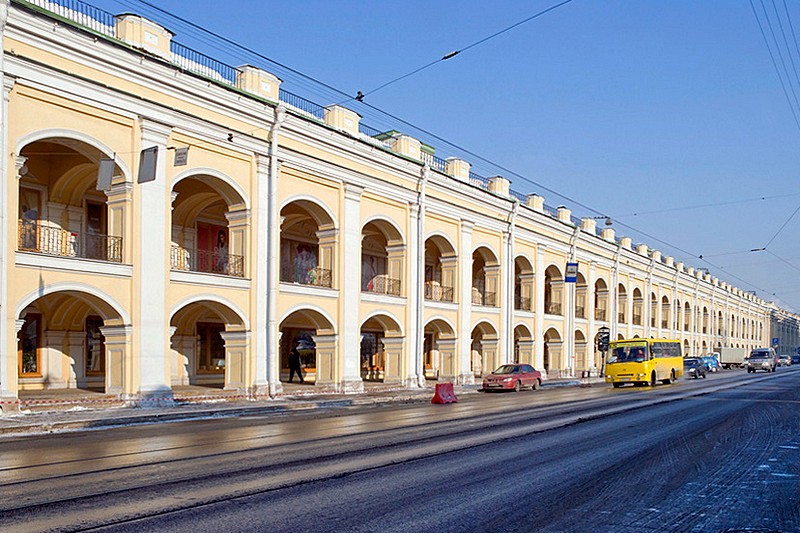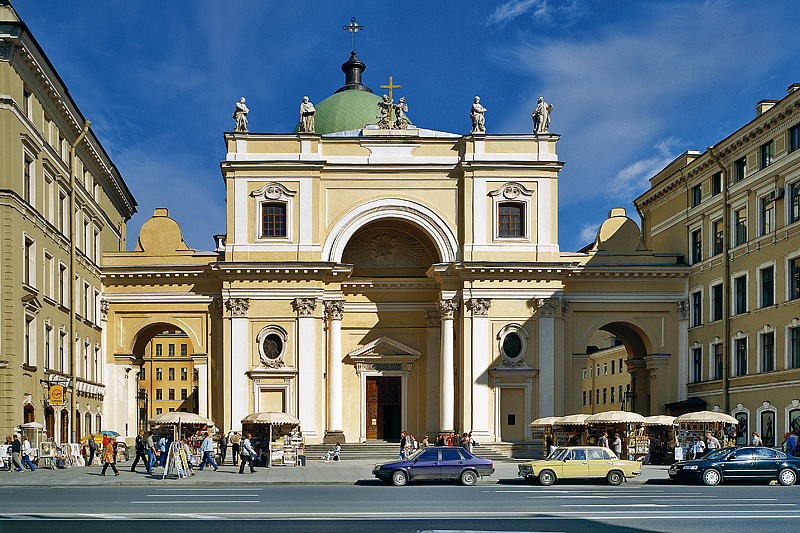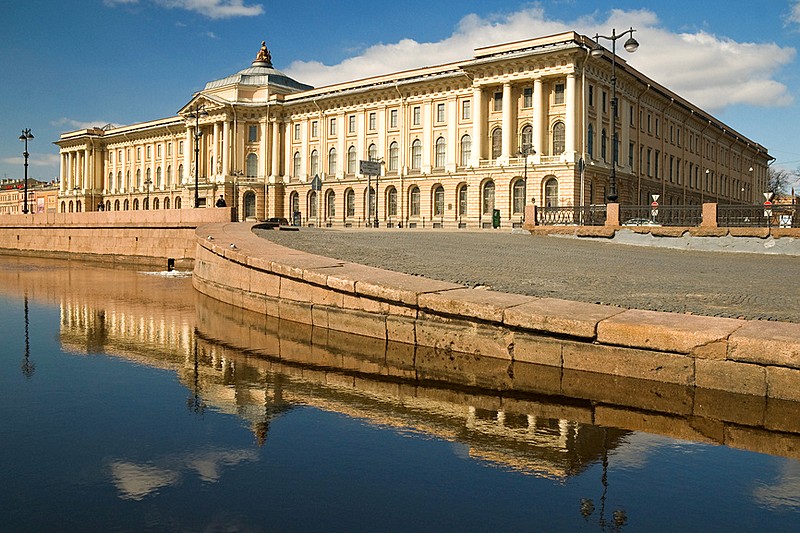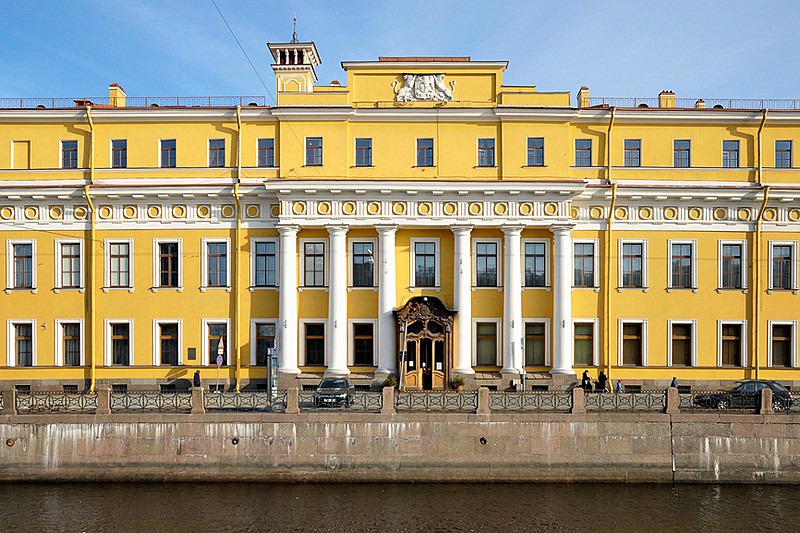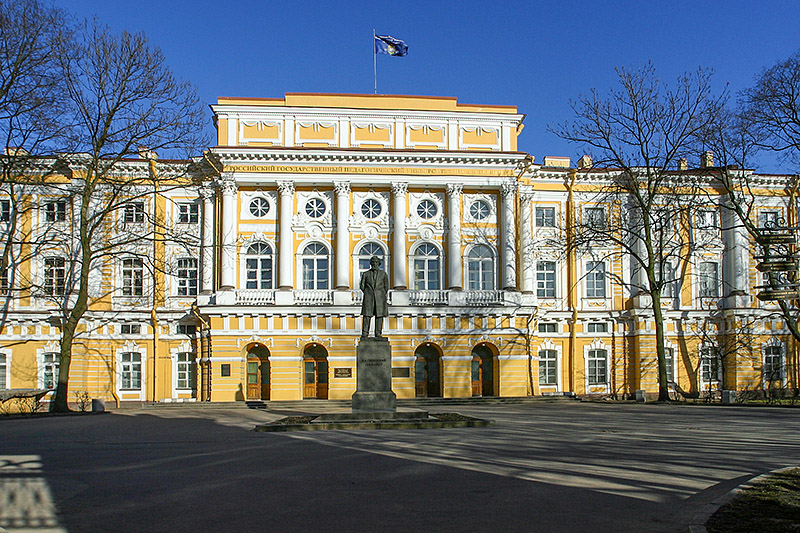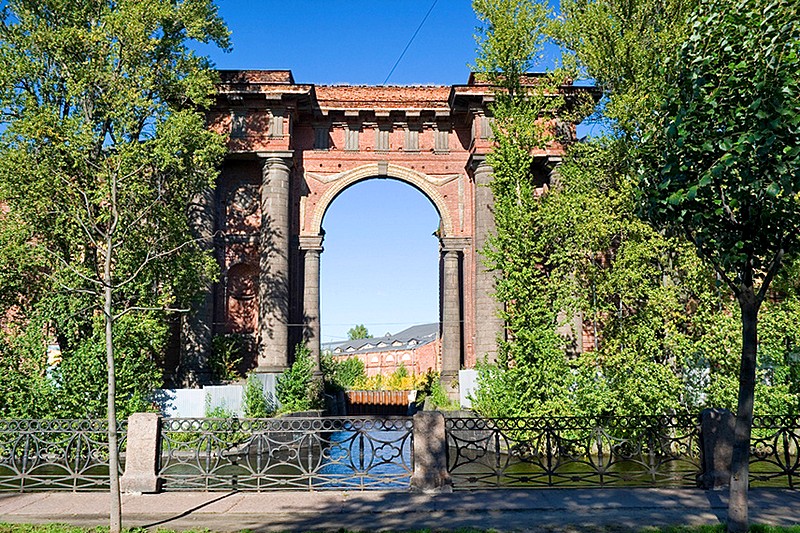Jean-Baptiste Vallin de la Mothe
Architect
Born: Angouleme, France - 1729
Died: Angouleme, France - 7 May 1800
Born in Angouleme in western France, Vallin de la Mothe is presumed to have studied architecture with his cousin, Jacques-Francoise Blondel, an influential educator who wrote the article on architecture in Diderot's Encyclopedie . He arrived in St. Petersburg in 1759, invited on the recommendation of Blondel and Jaques Soufflot, architect of the Pantheon in Paris, to teach at the Academy of Arts. He brought with him the latest Parisian theories of neoclassical principals.
His first major project in the city was the completion of the Bolshoy Gostiny Dvor (1761-1785) on Nevsky Prospekt, St. Petersburg's central market and now the city's most famous department store. The project had already been worked on by Francesco Bartolomeo Rastrelli and Antonio Rinaldi, but it was Vallin de la Mothe's simply elegant (and considerably less expensive) scheme that won the approval of the city authorities and the merchants who were paying for it.
Vallin de la Mothe was quickly called upon to design other major projects including the Catholic Church of St. Catherine (1763-1783), completed by Antonio Rinaldi, and the Palace of Count Kirill Razumovskiy (1762-1766), begun by Alexander Kokorinov. In collaboration with Kokorinov, he designed the magnificent Academy of Arts building on University Embankment (1764-1788). Unlike most architects of the time, Vallin de la Mothe did not supervise the construction of the buildings he designed, and thus many of his works are considered "collaborations", including the Small Hermitage (1766-1769) and New Holland (1765-1780), for which he provided designs for the outer walls and the famous monumental arch. His other major works include the Yusupov Palace on the Moyka River (1770s) and Alexandrino, the country residence of Count Ivan Chernyshev (1760s), and he also designed several interiors in the Winter Palace for Catherine the Great, who was a fervent admirer of the Palladian neoclassicism of which he was a proponent.
Vallin de la Mothe's pupils at the Academy of Arts included Vasiliy Bazhenov, who would go on to design the palace and park at Tsaritsyno, and Ivan Starov, whose Tauride Palace is one of the undisputed masterpieces of Russian neoclassicism. He returned to France in 1775, and died in Angouleme in relative obscurity in 1800. He was the first great neoclassical architect to work in St. Petersburg, arriving in the city as Francesco Rastrelli was completing the extravagantly rococo Winter Palace. By the time he left the city, neoclassicism dominated, in no small part thanks to his influence.
Works: Bolshoy Gostiny Dvor, Catholic Church of St. Catherine, Razumovskiy Palace, Academy of Arts building, Small Hermitage, New Holland, Yusupov Palace on the Moyka River, Chernyshev Dacha (Alexandrino)

